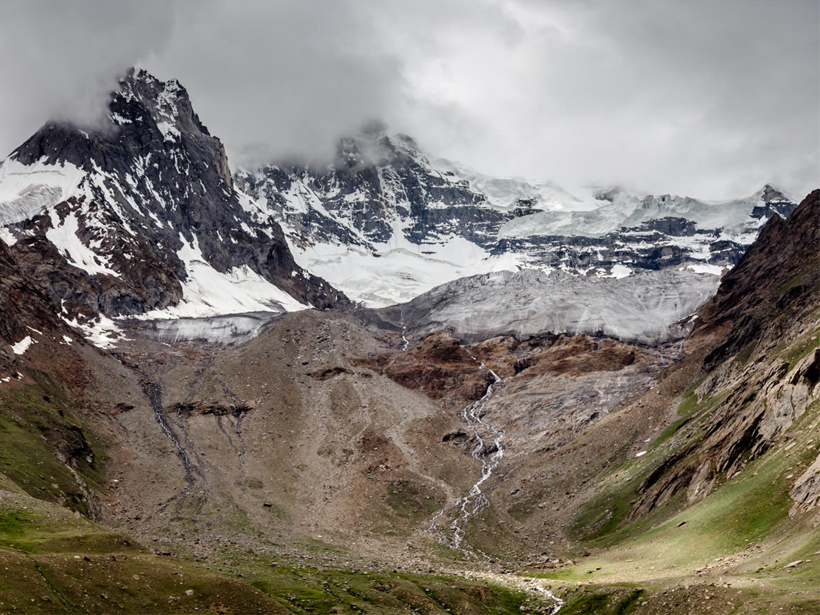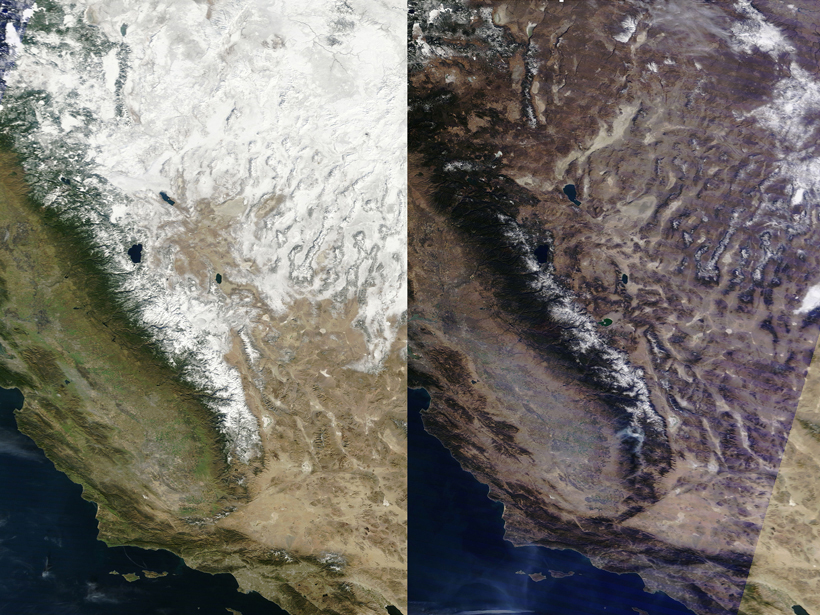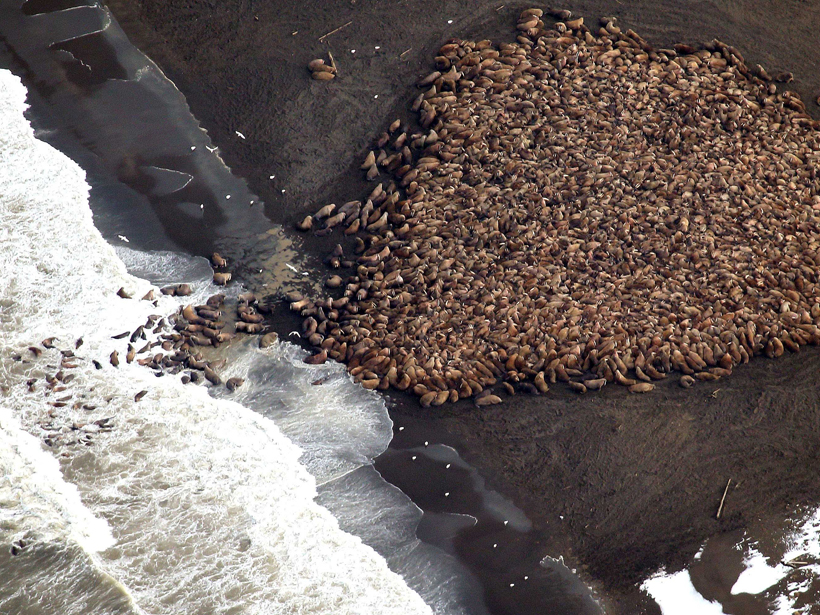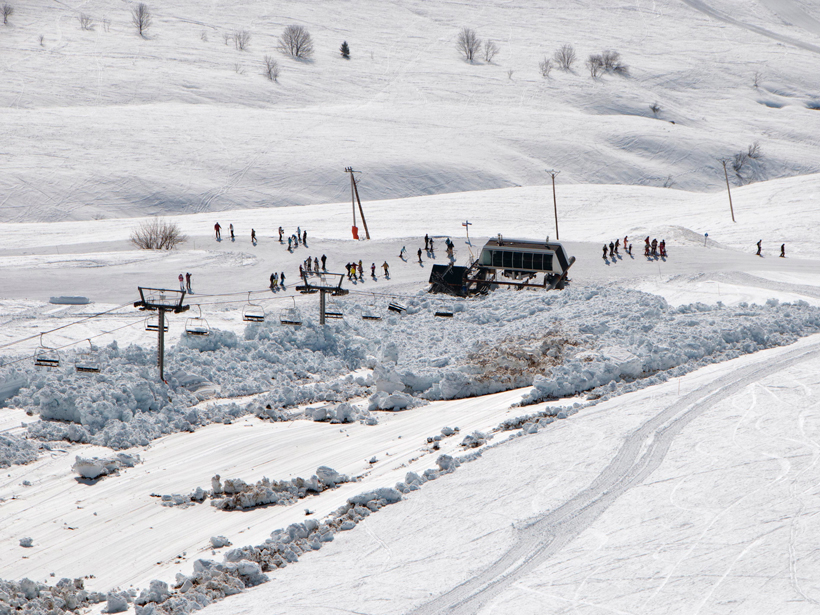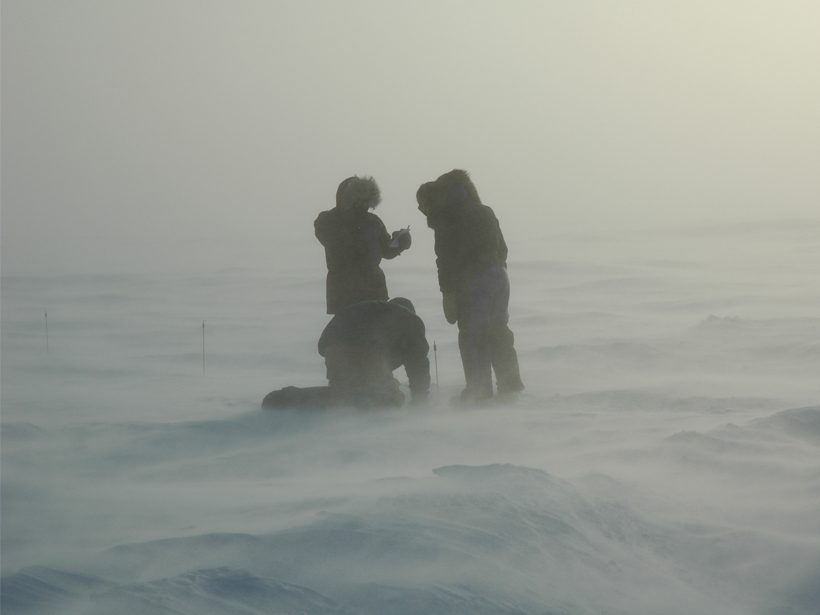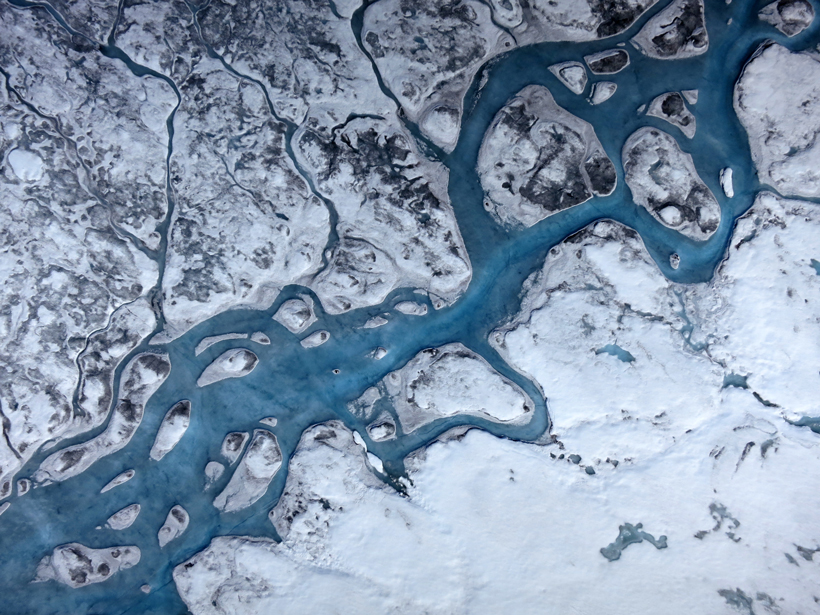During expedition cruises, tourists participate in collecting scientific data and contribute to ongoing observations of sea ice conditions in the Arctic.
snow
Permafrost Area Is Sensitive to Key Soil and Snow Physics
Accounting for key soil and snow variables shows a much higher impact on simulated permafrost area than uncertainties in land cover and climate data.
Faster-Merging Snow Crystals Speed Greenland Ice Sheet Melting
Satellite data and modeling reveal a trend toward coarser-grained, more-light-absorbent snow.
Quantifying Terrestrial Snow from Space
MicroSnow2 and SnowEx Workshops; Columbia, Maryland, 13–17 July 2015
Climate Change Freezes Mountain Wildflower Reproduction
New research provides evidence that plants that flower earlier in the year because of climate warming experience more frost damage and have less reproductive success.
Climate Change Drives Increasing Snowfall in Western Antarctica
Using ice core records from West Antarctica, researchers look back at the past 300 years of snowfall over the Amundsen Sea.
Arctic Report Card Highlights Profound Regional Changes
The annual assessment focuses on changes to sea ice, snow cover, temperature, and other indicators. Scientists say that changes in the Arctic also affect climate globally.
Slow-Moving Glide Avalanches Still Pack a Punch
Predicting glide avalanches and explaining how they work are difficult tasks, but the forces they exert can be calculated fairly well.
Improving Representation of Snow on Sea Ice in Climate Models
Snow on Sea Ice Workshop; Barrow, Alaska, 29 April to 1 May 2015
What Darkens the Greenland Ice Sheet?
Limited observational data sets and incomplete surface energy balance models constrain understanding of the driving processes for Greenland's ice sheet.


